Sweden Calendar 2025 - Public & Regional Holiday: Significance and Activities
16:06 | 10/11/2024 Print
Sweden, a country renowned for its breathtaking landscapes and vibrant cultural heritage, observes several public holidays and regional celebrations each year. These holidays reflect Sweden’s deep-rooted traditions, Lutheran Christian influence, and respect for seasonal changes. In 2025, Sweden’s public holidays offer a glimpse into its rich culture, combining solemn observances with festive celebrations.
Learn more: Europe Calendar 2025 - List of Public Holidays and Celebration
List of Public Holidays in Sweden 2025: Significance, Celebrations
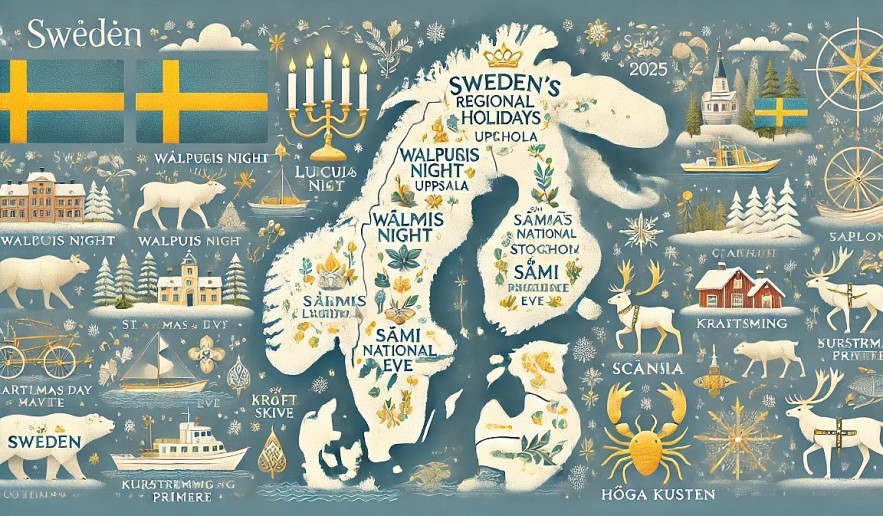 |
| Holidays in Sweden 2025 |
Sweden has 13 official public holidays that are celebrated nationwide. Most of these holidays are Christian in origin, with a significant focus on cultural traditions.
1. New Year’s Day (Nyårsdagen)
- Date: January 1, 2025
- Type: Public Holiday (Nationwide)
- Closures: Schools, public offices, and most supermarkets are closed.
- History and Significance:
New Year’s Day marks the beginning of the calendar year and symbolizes renewal and new beginnings. Swedes often reflect on the past year and set intentions for the year ahead.
- Celebrations and Activities:
Celebrations typically involve family gatherings and fireworks displays. Major cities like Stockholm and Gothenburg host spectacular firework shows. Many Swedes also enjoy winter walks and cozy meals at home.
2. Epiphany (Trettondedag Jul)
- Date: January 6, 2025
- Type: Public Holiday (Nationwide)
- Closures: Schools, public offices, and most businesses are closed.
- History and Significance:
Epiphany commemorates the visit of the Three Wise Men to the infant Jesus and marks the end of the Christmas season. It is a religious and cultural tradition in Sweden.
- Celebrations and Activities:
Families enjoy the final moments of the Christmas season, often dismantling Christmas decorations. Church services and small community gatherings are held in some areas.
3. Good Friday (Långfredagen)
- Date: April 18, 2025
- Type: Public Holiday (Nationwide)
- Closures: Schools, public offices, and most businesses are closed.
- History and Significance:
Good Friday honors the crucifixion of Jesus Christ. It is a day of reflection and solemnity in Sweden’s Lutheran tradition.
- Celebrations and Activities:
Many Swedes attend church services or spend the day quietly with family. For non-religious Swedes, the holiday is often spent outdoors or preparing for Easter festivities.
4. Easter Sunday and Monday (Påskdagen och Annandag Påsk)
- Dates: April 20–21, 2025
- Type: Public Holiday (Nationwide)
- Closures: Schools, public offices, and most supermarkets are closed.
- History and Significance:
Easter celebrates the resurrection of Jesus Christ and the arrival of spring.
- Celebrations and Activities:
Swedish Easter traditions include decorating with påskris (Easter twigs), painting eggs, and enjoying feasts featuring lamb, salmon, and herring. Children dress up as påskkärringar (Easter witches) and go door-to-door exchanging drawings for sweets.
5. Labour Day (Första Maj)
- Date: May 1, 2025
- Type: Public Holiday (Nationwide)
- Closures: Schools, public offices, and supermarkets are closed.
- History and Significance:
Labour Day is a celebration of workers’ rights and the labor movement. In Sweden, it is both a political and cultural holiday.
- Celebrations and Activities:
Political rallies and parades are held in cities like Stockholm and Malmö. Many Swedes also use the day to enjoy springtime with outdoor activities.
6. Ascension Day (Kristi Himmelsfärdsdag)
- Date: May 29, 2025
- Type: Public Holiday (Nationwide)
- Closures: Schools, public offices, and supermarkets are closed.
- History and Significance:
Ascension Day commemorates Jesus Christ’s ascension into heaven, observed 40 days after Easter.
- Celebrations and Activities:
It is a quiet day for reflection, with many Swedes attending church services or enjoying nature. Some rural communities host small fairs or gatherings.
7. National Day of Sweden (Sveriges Nationaldag)
- Date: June 6, 2025
- Type: Public Holiday (Nationwide)
- Closures: Schools, public offices, and most businesses are closed.
- History and Significance:
National Day celebrates the 1523 election of King Gustav Vasa, which marked Sweden’s independence. It also honors the adoption of the modern Swedish constitution in 1809.
- Celebrations and Activities:
Festivities include flag-raising ceremonies, parades, and speeches. In Stockholm, the Royal Palace hosts an open house. Families celebrate with picnics, traditional music, and cultural events.
8. Midsummer’s Eve and Day (Midsommarafton och Midsommardagen)
- Dates: June 20–21, 2025
- Type: Public Holiday (Nationwide)
- Closures: Schools, public offices, and most supermarkets are closed.
- History and Significance:
Midsummer celebrates the summer solstice, the longest day of the year. It is one of Sweden’s most beloved and traditional holidays.
- Celebrations and Activities:
Swedes gather around majstången (the maypole) to dance and sing folk songs. Flower crowns are worn, and traditional meals of pickled herring, potatoes, and strawberries are enjoyed. The holiday often includes outdoor games and festivities that last late into the night.
9. All Saints’ Day (Alla Helgons Dag)
- Date: November 1, 2025
- Type: Public Holiday (Nationwide)
- Closures: Schools, public offices, and most supermarkets are closed.
- History and Significance:
All Saints’ Day honors deceased loved ones and saints. It is a day of remembrance and reflection.
- Celebrations and Activities:
Families visit cemeteries to light candles and place flowers on graves. Churches hold special services, and the atmosphere is solemn and reflective.
10. Christmas Eve, Day, and Boxing Day (Julafton, Juldagen, Annandag Jul)
- Dates: December 24–26, 2025
- Type: Public Holiday (Nationwide)
- Closures: Schools, public offices, and most supermarkets are closed.
- History and Significance:
Christmas celebrates the birth of Jesus Christ and is one of Sweden’s most cherished holidays.
- Celebrations and Activities:
On Christmas Eve, families gather for a julbord (Christmas buffet), featuring dishes like meatballs, ham, and pickled herring. Gifts are exchanged, often delivered by Jultomten (Santa Claus). Christmas Day is quieter, often spent with extended family, while Boxing Day is a day for relaxation and winter sports.
Learn more: Top 15 Biggest Festivals and Carnivals in Europe in 2025
Regional and Lesser-Known Holidays in Sweden 2025
In addition to national public holidays, Sweden celebrates several regional and lesser-known observances that highlight its cultural diversity and historical traditions. These holidays, while not recognized as official public holidays, are deeply meaningful to local communities and provide insight into Sweden’s unique heritage.
1. St. Knut’s Day (Tjugondag Knut)
- Date: January 13, 2025
- Observed In: Nationwide, with stronger traditions in southern Sweden (e.g., Scania).
- Significance:
Marks the end of the Christmas season. Traditionally, it is the day to "dance out Christmas" and take down decorations.
- Celebrations:
- Children’s parties with games and sweets.
- The Christmas tree is often taken down, and leftover treats are shared.
2. Walpurgis Night (Valborgsmässoafton)
- Date: April 30, 2025
- Observed In: Nationwide, with major events in Uppsala, Lund, and Gothenburg.
- Significance:
Celebrates the arrival of spring and honors St. Walpurga, a Christian saint. Its roots also lie in ancient pagan spring festivals.
- Celebrations:
- Large bonfires to ward off evil spirits and celebrate light’s return.
- Traditional singing, often by student choirs, and speeches.
- Universities in Uppsala and Lund hold grand student festivities.
3. Crayfish Party (Kräftskiva)
- Date: Early August (dates vary)
- Observed In: Predominantly in southern and central Sweden.
- Significance:
A traditional summer feast marking the crayfish harvesting season, symbolizing togetherness and enjoying Sweden’s culinary traditions.
- Celebrations:
- Outdoor feasts with boiled crayfish, dill, cheese, and schnapps.
- Guests wear bibs and party hats, singing traditional drinking songs.
- Decorated lanterns and string lights add to the festive atmosphere.
4. St. Lucia’s Day (Luciadagen)
- Date: December 13, 2025
- Observed In: Nationwide, but especially prominent in schools, churches, and local communities.
- Significance:
Honors St. Lucia, a Christian martyr, and symbolizes light and hope during the darkest part of the year.
- Celebrations:
- Processions led by a girl dressed as Lucia, wearing a crown of candles.
- Choirs sing traditional Lucia songs, and saffron buns (lussekatter) are served.
- Schools and workplaces hold their own Lucia celebrations.
5. Jokkmokk Winter Market (Jokkmokks Vintermarknad)
- Dates: February 1–3, 2025
- Observed In: Jokkmokk, Lapland
- Significance:
One of the oldest and most famous Sámi markets, celebrating Sámi culture and traditions.
- Celebrations:
- Traditional Sámi handicrafts, foods, and reindeer races.
- Cultural performances, storytelling, and exhibitions about Sámi heritage.
- Visitors can experience the Arctic winter and Sámi way of life.
6. Mårtensafton (Martinmas Eve)
- Date: November 10, 2025
- Observed In: Scania (Skåne) and southern Sweden.
- Significance:
Celebrates St. Martin and the traditional feast of goose. Its origins are tied to the Catholic feast honoring St. Martin of Tours.
- Celebrations:
- A feast featuring gås (roast goose) and svartsoppa (black soup).
- Local festivities often include historical reenactments and regional delicacies.
7. Sámi National Day (Samernas nationaldag)
- Date: February 6, 2025
- Observed In: Sámi communities in northern Sweden (Norrbotten and Lapland).
- Significance:
Celebrates Sámi culture and their struggle for recognition and rights as an indigenous people.
- Celebrations:
- Flag-raising ceremonies and cultural events in towns like Kiruna and Jokkmokk.
- Traditional Sámi food, music, and crafts are showcased.
8. Surströmming Premiere
- Date: Third Thursday in August (August 21, 2025)
- Observed In: Northern Sweden (especially in coastal regions like Höga Kusten).
- Significance:
Marks the release of the year’s batch of fermented herring (surströmming), a traditional Swedish delicacy.
- Celebrations:
- Families and friends gather for tasting parties.
- Surströmming is served with flatbread, potatoes, and onions.
- Despite its strong smell, it is a cherished tradition in northern Sweden.
9. Göteborg Culture Festival (Göteborgs Kulturkalas)
- Dates: Mid-August (Exact dates vary)
- Observed In: Gothenburg
- Significance:
A celebration of arts, culture, and community in Sweden’s second-largest city.
- Celebrations:
- Free concerts, performances, and art exhibitions.
- Food markets featuring both Swedish and international cuisines.
- Workshops and activities for all ages.
Conclusion
Sweden’s public and regional holidays in 2025 offer a blend of cultural, historical, and seasonal significance. From the warmth of Midsummer’s Eve to the solemn reflection of All Saints’ Day, each holiday showcases Sweden’s unique traditions and communal spirit. Whether enjoying festive meals or attending traditional ceremonies, these holidays provide both Swedes and visitors an opportunity to connect with the country’s rich heritage.
FAQs
-
What are Sweden’s most important holidays?
Midsummer, Christmas, and National Day are among Sweden’s most significant holidays.
-
Are shops and offices closed on public holidays in Sweden?
Yes, most public holidays see closures of schools, public offices, and supermarkets, although some tourist attractions may remain open.
-
What makes Midsummer special in Sweden?
Midsummer is celebrated with traditional dances, flower crowns, and outdoor feasts, marking the summer solstice.
-
Do Swedes celebrate Easter differently?
Yes, Swedish Easter traditions include påskris (decorated twigs) and children dressing as Easter witches.
-
Is Saint Lucia’s Day a public holiday?
No, but it is widely celebrated with processions, music, and traditional treats like saffron buns.
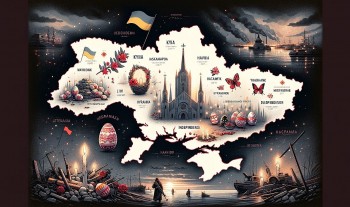 2025 Ukraine Calendar - List of Public Holidays, Observances, Celebrations and Activities 2025 Ukraine Calendar - List of Public Holidays, Observances, Celebrations and Activities This guide provides a comprehensive overview of Ukraine’s national public holidays, observances, and regional traditions in 2025, including their dates, history, significance, and potential impact ... |
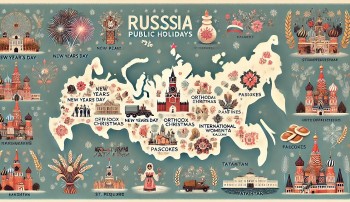 Russia Calendar 2025 - List of Public Holidays, Observances, Celebrations Russia Calendar 2025 - List of Public Holidays, Observances, Celebrations The dates, background, significance, and celebration activities of Russia's public holidays, bridge holidays, and regional or unofficial observances in 2025 are all covered in detail ... |
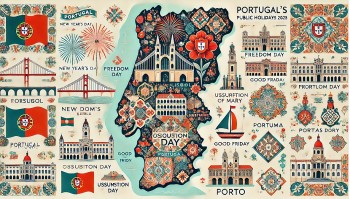 Portugal Calendar 2025 - List of Public Holidays, Significance and Activities Portugal Calendar 2025 - List of Public Holidays, Significance and Activities The dates, background, significance, and celebration activities of Portugal's national public holidays, regional holidays, and distinctive customs for 2025 are all covered in this guide. |
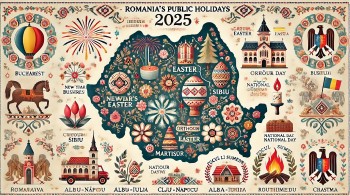 Romania Calendar 2025 - List of Public Holidays: Significance and Celebrations Romania Calendar 2025 - List of Public Holidays: Significance and Celebrations This comprehensive guide provides an overview of public holidays, regional holidays, and important observances in Romania for 2025, including their dates, history, significance, and celebrations. |
Larry Mimosa
Article URL: https://knowinsiders.com/sweden-calendar-2025-public-regional-holiday-significance-and-activities-41150.html
All rights reserved by KnowInsider
